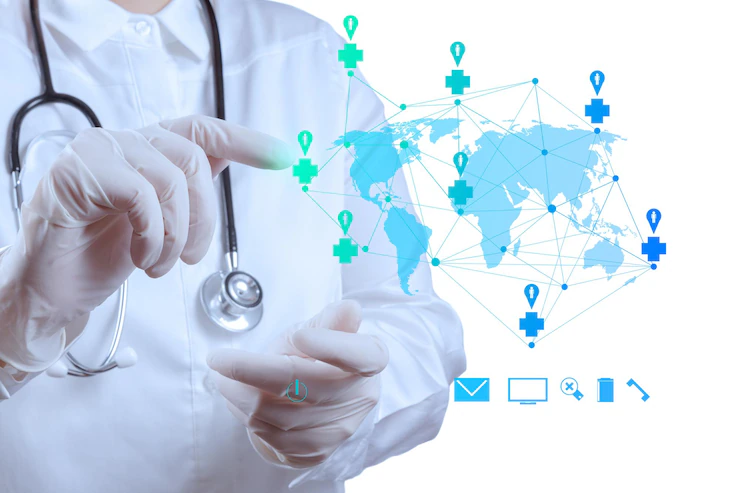An Inside Look Into The World Of Medical Transcription
4 Mins Read
Published on: 14 December 2023
Last Updated on: 16 July 2024

toc impalement
In the ever-evolving healthcare landscape, two key elements take precedence – accuracy and efficiency. Among many critical components contributing to these aspects, medical transcription is one silent but significant player. This often-underappreciated tool is crucial in streamlining processes and ensuring effective communication among healthcare providers.
A seemingly simple yet intricate process, it involves transcribing medical reports from voice recordings made by healthcare professionals. These transcriptions serve multiple purposes, from patient care and research to legal applications. Let’s delve deeper into the world of transcription, exploring its significance and the benefits it offers.
Precision At Its Finest
At the heart of medical transcription lies the commitment to accuracy. Medical transcriptionists meticulously transcribe information from audio recordings to written text. Their key responsibility is to ensure that no detail is missed or misinterpreted.
After all, in healthcare, a single error can potentially lead to severe consequences, emphasizing the importance of accuracy in transcription. The transcribed documents are then used by doctors, nurses, and other healthcare providers to understand the patient’s medical history, diagnosis, and treatment.
Speeding Up Insurance Claims
Medical transcription also plays a vital role in the processing of insurance claims. The transcribed medical records are tangible evidence of the medical services provided, making claim processing quicker and more efficient.
With transcription, there’s no need to sift through countless handwritten notes or decipher audio recordings. Instead, insurance companies can access clear, concise, and accurate written records.
Demystifying Medical Documentation
Medical transcription greatly simplifies the documentation process. It converts complex medical terminology into a format that’s easy for anyone to understand. This mainly benefits non-medical staff, such as insurance agents and administrative personnel.
By bridging the gap between medical professionals and those outside the medical field, transcription ensures that everyone involved in patient care, directly or indirectly, has access to clear and understandable information.
A Cost-Effective Solution
While it might initially appear as an additional expense, incorporating medical transcription into healthcare operations can save significant costs. Outsourcing transcription tasks eliminates the need to employ in-house transcriptionists, reducing overhead costs. Furthermore, accurate transcriptions mean fewer errors, translating to less time and resources spent on corrections.
Optimizing Time And Effort
Perhaps one of the most notable benefits of medical transcription is the amount of time and effort it saves. Doctors and other healthcare professionals can dedicate more time to patient care rather than being bogged down by paperwork.
Administrative staff, too, benefit from this. With transcription handling most of the documentation, they can focus on their core responsibilities.
Enhancing Data Accessibility
While transcription offers many advantages, one of its noteworthy benefits lies in its ability to improve data accessibility. With digitized medical records, healthcare providers can easily retrieve patient information whenever and wherever required. This quick access to comprehensive patient data aids in providing timely and appropriate care.
Facilitating Research And Studies
Transcriptions provide a wealth of data that can be used for medical research and studies. Researchers can analyze these records to study health trends, efficacy of treatments, and disease patterns. It, therefore, plays a crucial role in advancing medical knowledge and contributing to public health initiatives.
Improving Patient Satisfaction
When healthcare providers spend less time on paperwork, and more time on patient care, it naturally leads to improved patient satisfaction. Medical transcription allows doctors to focus on their patients, enhancing the quality of care. Moreover, with transcribed records, patients can have better access to their medical information, promoting transparency and trust.
Compliance With Legal Requirements
Medical transcriptions help healthcare providers comply with legal and regulatory requirements. Law often requires accurate and detailed patient records for various purposes, from insurance claims to audits. This ensures that these records are maintained meticulously, reducing the risk of non-compliance penalties.
Promoting Interoperability
In an era where integrated care is gaining prominence, it promotes interoperability – the ability of different healthcare systems to work together. Transcribed records can be easily shared among other providers, enabling seamless care coordination, especially for patients with complex health conditions requiring multidisciplinary care.
Embracing The Power Of Medical Transcription: A Conclusive Perspective
In conclusion, medical transcription is an integral part of contemporary healthcare. It ensures accuracy, aids in the quick processing of claims, simplifies documentation, saves costs, and optimizes time and effort. As we navigate the intricacies of modern healthcare, it becomes increasingly relevant.
Despite often being overlooked, it is a critical tool in delivering quality patient care. Though complex, the world of transcription is undeniably indispensable in our pursuit of efficient and effective healthcare services. We hope this information has been beneficial and appreciate your time reading it.
Read Also:


















Comments Are Closed For This Article